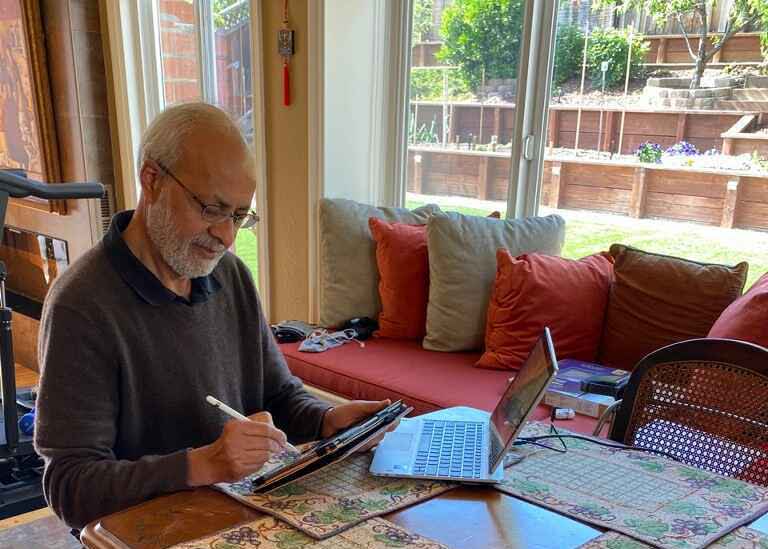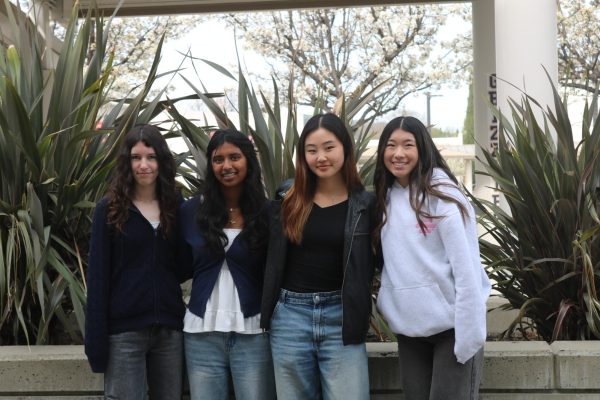Teachers adjust to online school
Cal High staff are working to resolve issues raised by virtual classes
JP Singh has taught his Honors Precalculus, Accelerated Algebra II, and AP Calculus BC classes from his living room since Cal High resorted to remote teaching in mid-March.
As Cal High’s student body and staff returned to an irregular start of the school year, a consensus formed among the teachers and most agree on one point: online school can be a real pain.
There are numerous problems the teachers face that they have not had time to properly address.
“I am working way more than I would be at school – on the weekends and trying to plan, it’s a lot,” English teacher Christina Teslich said. “Other teachers can agree with me because it’s getting tiring and burning us out.”
Most teachers are already exhausted after less than two months of distance learning. From trying to convert regular in-class lessons into online formats to keeping up with grading and countless meetings, it seems to be taking its toll. And they’re not even into October yet.
“Usually teachers take off the summer. They plan, they meet,” Principal Megan Keefer said. “This year, they just worked all summer.”
Other difficulties teachers are confronting include finding a way to create a personal connection and relationship with their students over Zoom and Google Meet. Although curriculum is what most people immediately point to when it comes to school and education, science teacher Sarah Gipson also mentioned how the relationship between a student and teacher is very crucial in a positive learning environment.
“When we are in-person I am able to see which students are struggling and which students are understanding,” science teacher Sarah Gipson said. “I can also talk to the students who are struggling one-on-one during tutorial which is difficult in the online schedule.”
Keefer said making connections is not just a challenge between teachers and students, but also between teachers and their colleagues. To address this issue, Keefer said leadership adviser Ross Dautel is attempting to put together community-building activities for teachers, especially those who are new.
“Even during staff development meetings, everybody is just a little rectangle on a screen,” new math teacher Christine Carucci said. “I don’t really know anybody, and I am new to the area, too.”
Although the change from in-person classes to distance learning has been a rollercoaster for teachers and students alike, Zoom and Google Meet have allowed for easier ways to teach online. The main feature of these two platforms that teachers are using is breakout rooms.
“The educational possibilities of breakout rooms are really, really strong and good, and it has been useful to discuss ideas that I assign in smaller groups,” history teacher Ryan Cook said. “The model is very beneficial even if we are still working on some of the kinks.”
Many teachers agree with Cook about the breakout rooms, but even so, technical issues will always be there without fail.
“During my fifth period, my computer kept shutting down and I had to use my cell phone for a bit,” Carucci said. “Using my cell phone for a Zoom meeting does not work well because I don’t have my Powerpoint on it.”
The technical issues do not end there. Many other teachers have reported Wifi issues, Google Classroom complications, Zoom troubles, and more. Another technical issue that is brought up by the students is the confusion between platforms for checking grades.
Since teachers are using Google Classroom to post assignments, many are using the grading feature provided as well. But updated grades are posted in Schoolloop, a grading program Cal and the San Ramon Valley Unified School District used for years until it was briefly replaced by Infinite Campus to start the school year.
After numerous complaints about this change, the district went back to using Schoolloop. (Read more about the Schoolloop saga in News Lite).
“I have to go on three different websites for checking only seven classes,” freshman Sachit Ganotra said. “It is not coordinated and makes it really difficult to access my final grades.”
Although these platforms have been difficult to navigate, teachers are trying to make the most of teaching online despite another obstacle teachers have encountered: the new remote learning schedule.
The remote learning schedule that was approved in July includes Mondays as common learning days, where students are required to attend each class for 35 minutes. The rest of the week alternates between odd (Tuesday and Thursday) and even (Wednesday and Friday) block schedules.
“Common learning days have an awkward amount of time which is too short but too long,” Gipson said. “It can be used in a better and more efficient way.”
Along with the common learning days, the timing for lunch and the access/student support period, formerly tutorial, is inconvenient and tiring for teachers and students alike. On Tuesdays through Fridays, students and teachers have two classes for nearly three consecutive hours with only a five-minute break in between.
“I think the schedule is really inconvenient because we have access and lunch and break in the same chunk,” sophomore Tasha Singh said. “A five-minute break is not long enough in between my last two periods which makes it hard to get through the end of the day.”
Although there are many flaws and issues that the teachers and students are experiencing regarding remote learning, there are still some positives.
“It’s been fun,” freshmen leadership and global studies teacher Hannah Cheng said.
“I think it has been an interesting experience for me to navigate through these platforms that I have not used yet.”
In just the first two months of school, teachers have started to adapt to what seems like the new normal.
“It’s gonna be weird,” Cook said. “I guess we’ll just have to watch it play out.”

Back again after a rigorous year as News Editor, senior Sami Tripasuri is excited to be co-Editor-in-Chief for The Californian. She enjoys writing and...










